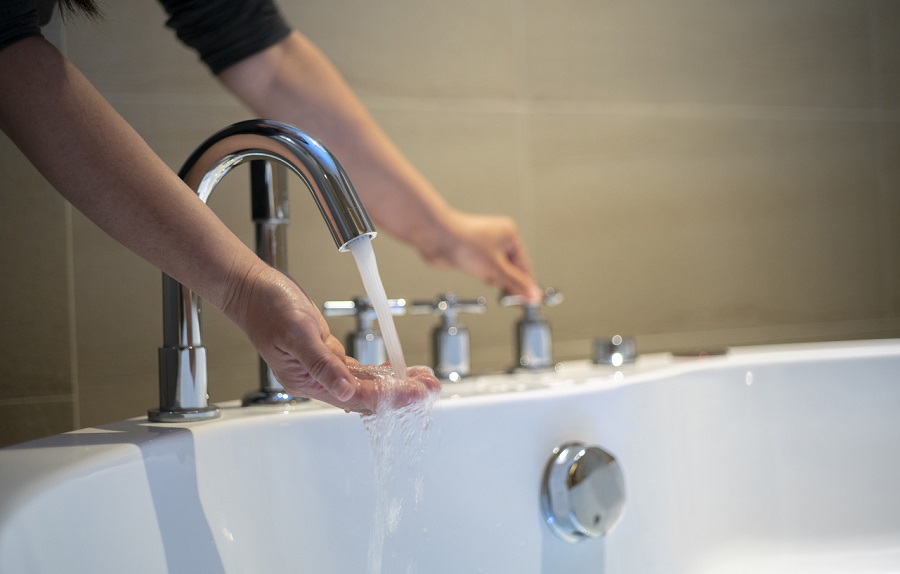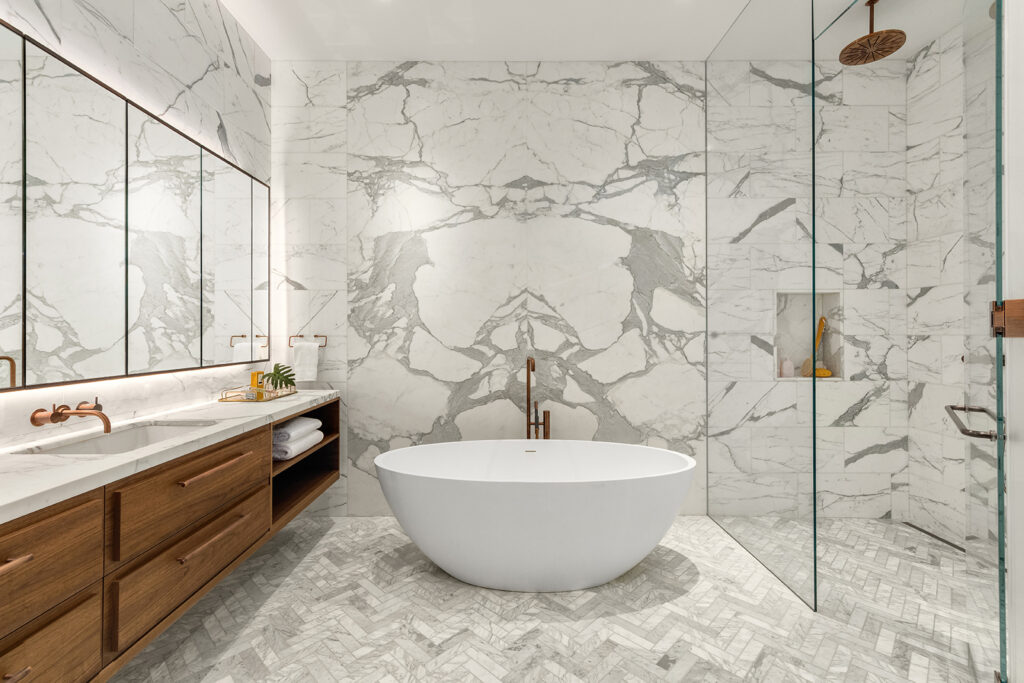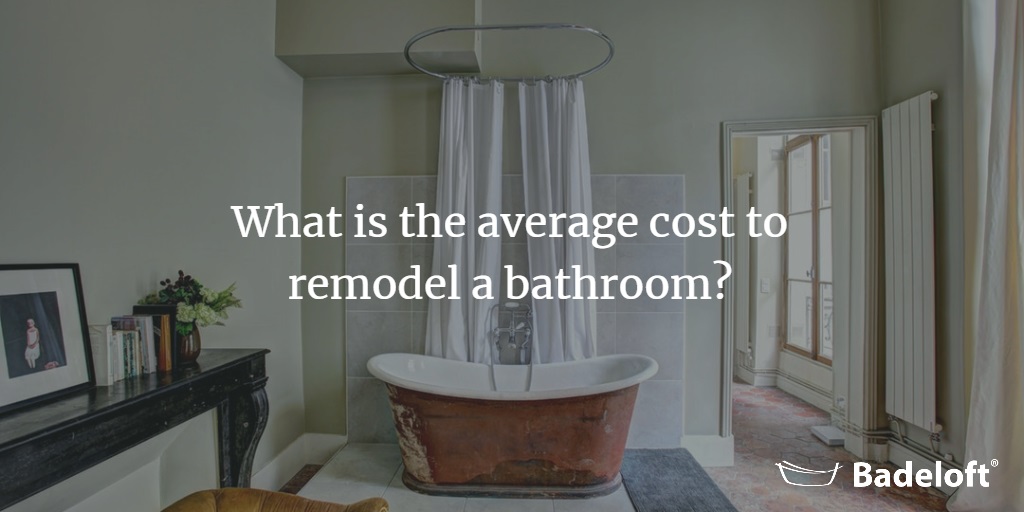Bathroom Remodel Costs in Illinois 2026 – Guest, Primary & Half Bath Pricing
Bathroom remodel costs in Illinois are influenced by the state’s mix of dense urban housing, aging infrastructure, and wide variation
Choosing an extraordinary bathtub for your new or remodeled bathroom has its challenges, one of which is choosing an equally extraordinary tub filler to match. Though a bathtub filler has a humble job, it can perform it spectacularly and look incredible when not in use. As with any other design element, you’ll want to carefully consider both form and function as well as any installation issues you may encounter.
Choosing a tub filler that complements your bathtub and the style of the room while meeting other criteria important to you is essential. Use the tips below to find the perfect tub faucet for your bathroom.
You may not have given much thought to bathtub fillers up until now, but there’s a lot to learn before you start shopping. Let’s start with the basics. One important factor to consider is whether your current bathtub is showing any warning signs for bathtub replacement, such as cracks, leaks, or persistent stains. Additionally, evaluating the type of filler that complements your tub’s design and functionality can greatly enhance your bathing experience. Taking the time to research will ensure you choose a filler that not only looks great but lasts for years to come. Understanding the different types of bathtub fillers and their compatibility with various tub materials is essential for making an informed decision. In this guide, we provide a common bathtub materials overview, covering the pros and cons of each option available on the market. With this knowledge, you can choose a filler that not only complements your bathroom’s aesthetic but also enhances your bathing experience.

Often called tub spouts or faucets, bathtub fillers are plumbing fixtures that deliver hot and cold water to the bathtub. They typically include knobs or a lever (diverters) for adjusting the temperature and flow of the water. Some bathtub fillers, particularly freestanding bathtub faucets, include a handheld shower wand, which is useful for rinsing off, hair washing, bathing kids and pets, or even cleaning the bathtub.
The three main types of bathtub fillers are:
In addition to the mounting types, bathtub fillers come in all kinds of styles, such as, but not limited to, the following:
Another consideration when choosing a bathtub filler for your bathtub involves whether you will install it yourself or hire a plumber or contractor to do the job. Many homeowners can successfully install new bathtub fillers on their own by following the manufacturer’s instructions or watching how-to videos. If you’re comfortable working with plumbing and minor construction projects like patching drywall, DIY bathtub filler installation is a viable option.
Surprisingly, tub fillers run an entire spectrum anywhere from $300 starting to $3,000 and up on the high end. This is due to the cost of the raw material used as many fillers are commonly made from polished chrome, brushed nickel or stainless steel, all of which typically are not cheap materials. Factor in that many fillers are seen as designer items, resulting in you paying ‘designer’ price for many fillers.
Beyond just the material used, the style of the filler also affects pricing as some styles are much more expensive than others as they all serve different functions such as water and temperature control as well as installation method. In general, with bathtub fillers, you do get what you pay for, so make your purchase carefully. Here are the costs associated with the most popular bathtub fillers
Using a bathtub should never be a hassle, but the water is often noisy, and the faucets fill too slowly; the water has gone cold. If these problems plague your bathing time, consider a quality filler. Quality fillers affect a bathtub’s fill time, noise level, temperature, and aesthetic appeal. By increasing the water flow to your bathtub, a filler can provide you with greater control and ensure bathing is always relaxing.

Low water pressure, water line issues, or old pipes can result from low flow, but more commonly, certain fillers have flow restrictions that prevent too much water from overflowing your bathtub. An optimal filler should have a flowrate of 4-6 gallons per minute, filling around 7-12 minutes.
Traditional faucets are generally loud and noisy when filling a bathtub. A filler solves this by providing water from an elevated position which lowers the noise level of the water added to the tub. Additionally, the higher quality material helps isolate the noise and not disturb the quiet peace of your bath.
Low-flow faucets create an unpleasant bathing experience as the heat runs out quickly, and the bath will be tepid by the time it’s full. A higher flowing filler can remedy this by keeping a consistent temperature throughout.
Bathtub fillers are commonly installed on the floor, providing greater control over the traditional faucet design.
Many bathtub fillers are designed with a mono-color scheme that can be drab and make your bathtub look cheap. Badeloft offers fillers that are both diverse and attractive with complementary designs that can immediately elevate the look of your bathtub.
Now that you know the basics of bathtub fillers, it’s time to choose one for your bathtub. Fillers and bathtubs go hand-in-hand, so the type of bathtub you have and its location will have a large influence on the type of filler you should get. Once you narrow that down, let your creativity flow.
For example, if your bathtub is installed against three walls, with no deck around it, you’re most likely going to need a wall-mounted tub filler as it wouldn’t make sense to place a freestanding tub filler along the one open side. In contrast, if you opt for a freestanding tub, you’ll have more flexibility in placement and can choose between various styles that enhance your bathroom’s aesthetic. Freestanding bathtub advantages in 2024 include their ability to serve as a stunning focal point and the ease of installation, as they don’t require complex plumbing configurations. This versatility allows homeowners to switch up their bathroom layout without being restricted by wall placement.
Browse through a few design websites, magazines, or even Pinterest for style ideas, focusing on bathtubs similar to yours. Another idea is to see what types of tub fillers your bathtub’s manufacturer offers as you’ll likely find styles that suit your tub perfectly.
After honing in on a particular style, you’ll also want to explore the different finishes and options available. For example, is a hand shower available? Is the filler available in alternative finishes such as rose gold or oiled bronze?
Will the faucet fit your bathtub? While it may not be installed in your tub, but rather above it or alongside it, the spout needs to be sufficiently long to divert the water into it. At the same time, it shouldn’t be too long or it will interfere with bathing.
For large and freestanding tubs, the number of gallons per minute can make a big difference in your comfort level. The faster the filler can fill the tub, the less likely it is that you will step into a cold bath!
Buying a bathtub filler online is an excellent choice. Manufacturers often post detailed videos, 3D images, and product installation guides alongside their product descriptions, providing you with more than enough detail to fall in love with your next bathtub filler. Start your search now!

Eric is the founder and president of Badeloft USA. He has been the president of Badeloft’s US division for over ten years and oversees all marketing and branding aspects of Badeloftusa.com.
His expertise lies in small business development, sales, and home and bathroom industry trends and information.
Contact us with any business related inquiries.

Free material samples and tub templates
Bathroom remodel costs in Illinois are influenced by the state’s mix of dense urban housing, aging infrastructure, and wide variation
Bathroom remodel costs in Pennsylvania are shaped by the state’s older housing stock, diverse regional economies, and wide variation between
Bathroom remodel costs in Ohio are shaped by the state’s older housing stock, moderate labor rates, and significant variation between

Remodeling a bathroom breathes new life into your home, turning a functional space into a comfortable and relaxing retreat—but it
"*" indicates required fields
"*" indicates required fields
Request your free material sample below. By submitting, you agree to receive occasional product updates and offers from Badeloft. Unsubscribe anytime.
"*" indicates required fields